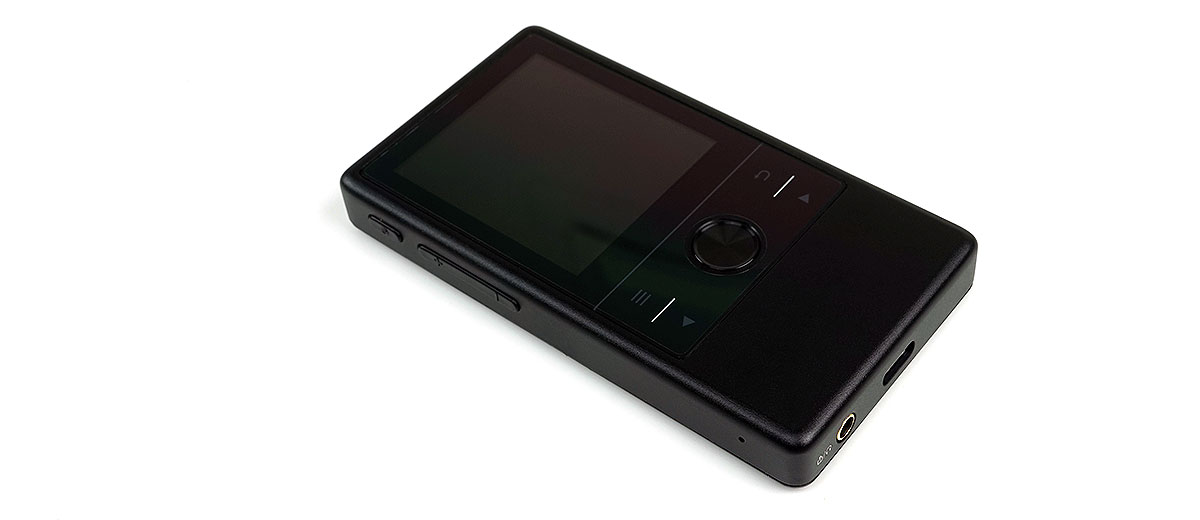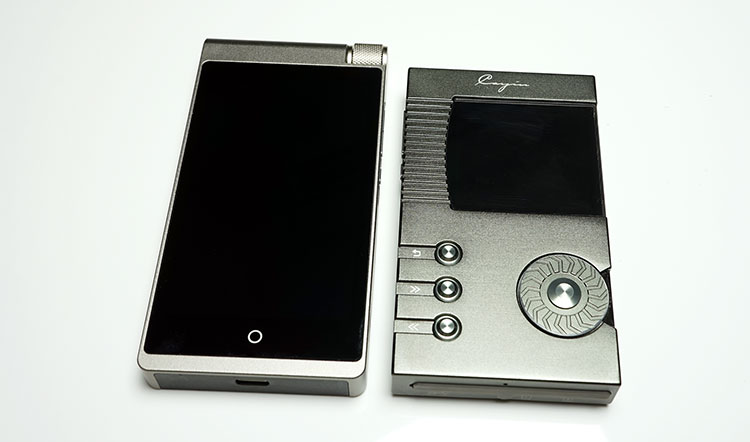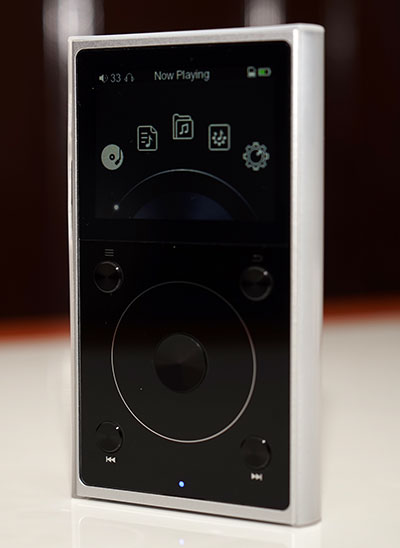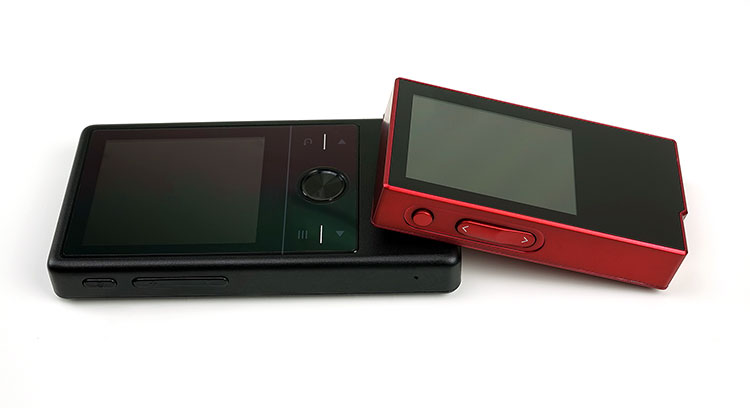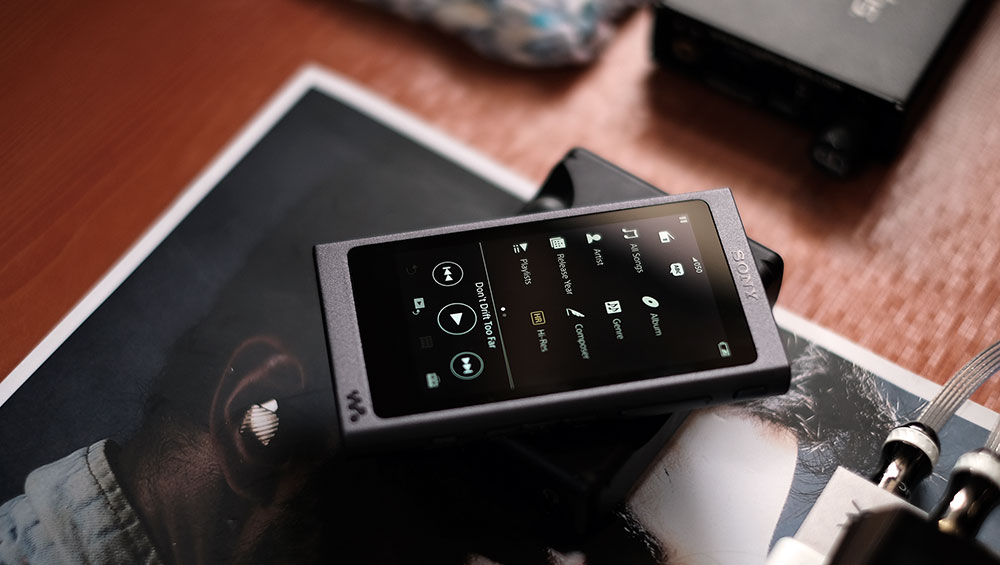Sound Impressions
Summary
The N3 is a full-bodied smooth sounding DAP with a warm to neutral tonal presentation. Much like the i5, it has a planted low end, a rich almost euphoric mid-range with a forward vocal presence as well as a reasonably relaxed but articulate treble performance.
Unlike the N5, the N3 has a softer, slightly smoother attack or leading edge to its notes producing instead a more natural sound that I find quite endearing and easy to listen to. Detail retrieval on the N3 is actually very good. It is not the controlled analytical type of player though so it is articulate and clear but not exacting.
Bass
Bass is impactful with good texture and plenty of body as well as an audibly decent sub-bass rumble. I definitely like the PRaT and energy the N3 bass performance brings to the table. Unlike say the Hidizs AP60 though it does not have an overly boosted mid-bass so it avoids sounding bloated or poorly defined and stays reasonably coherent despite its lively character.
Mids
Mids on the N3 are more spacious and open sounding and much like the i5 there is a little bit of mid-range 1-3k emphasis pushing forward vocals and injecting a better sense of space around them.
Instrumental separation is reasonably accurate and exhibits a smooth and natural sounding timbre. If anything, the timbre errs more to the euphoric side with a slight dominance of even harmonics underpinned by solid instrument fundamentals.
Treble
Again, the N3 takes the same approach to its treble performance as the i5, electing to go smooth and natural instead of anything too sharp or with too much sparkle. It has a slightly laid-back quality to it but there is nothing syrupy or overly roll-off.
Those looking for a touch more energy or aggression though might prefer the N5’s more strident and sharper treble signature. If you are coming from the i5 this is going to be a very familiar tonal quality.
Synergy
Efficiency
Low Gain Is Lower
For those i5 fans who found that the lowest gain setting on the i5 carried just a bit too much power for sensitive IEMs, the N3 may be the right choice instead. The N3’s low gain setting is now 5-6dB lower than the i5 low gain setting. The existing low gain setting of the i5 is now labeled as the medium gain setting on the N3.
3 Choice Of Gain
The inclusion of an even higher high gain setting means you now have the choice of 3 gains settings on the N3 which makes it the most efficient DAP from Cayin to date for IEMs.
Add to that the lower overall power output and similar performance out of the DAC in terms of dynamic range and SNR (108dB) and you also have the lowest noise floor on any Cayin DAP I have tested thus far.
Noise
IEMs such as the Andromeda, SE846, and the VE6XC, 3 fairly sensitive IEMs, all exhibited impressively low noise levels on the new low gain setting.
The inclusion of a mute relay in the design also puts a complete block on noise from the N3 when no playback is activated. Now it won’t give me an absolutely black background like the digital amp of the Sony A35, but compared to the N5 and even the i5 the N3 is quieter.
Power
The additional power (190mW at 32 ohms) of the i5 only really begins to make its mark once you start working with headphones, and even at that, less efficient headphones.
Planar headphones such as the LCD-2 did well out of both DAPs but the N3 voltage levels on high gain were already 30-40 steps higher (digital volume steps) than the i5 high gain which was in cruise mode in comparison.
Relatively the same scenario played out on dynamic headphones such as the fairly portable closed-back K872 32-ohm flagship.
Again, both could pull off a satisfactory presentation but the i5 had much more in reserve if needed and was a good 20 steps lower on its digital volume in high gain. The more demanding the headphone the greater the gap in terms of volume and being driven well between the two DAPs.
Select Comparisons
Cayin N5 & i5
$399 & $499
Power
On paper, the N3 does a pretty good job keeping up to or at least close to the mid-fi Cayin DAPs. The only area where the two higher-end models really pull away from the N3 is the power figures with the i5 at 190mW+190mw (@32Ω), the N5 even higher at 200mW+200mW @32Ω compared to the N3’s lower 130 mW+130 mW (@32Ω).
Technically the N3 is the least powerful of the three and the least likely to be the best pick for demanding headphone use.
Noise
On the flip side though its lower power rating makes the N3 a much more suitable choice for a lot of IEM’s over the other two.
One of the consistent issues with the N5 and to some extent the i5 was the level of noise generated on the super-efficient BA designs, for example, Shure SE846 and Campfire Audio Andromeda. Now the i5 firmware revisions have brought that down considerably but for the N5 it is still there, especially with balanced output.
The N3 on the other hand still throws out the same dynamic range and SNR numbers (108dB) as both of the mid-fi DAPs but the lower power rating and 3-way adjustable gain make this the best performer for noise with the likes of the Andromeda.
Features
Whilst the i5 is on a higher plane with regard to features and connectivity due to its expansive Android platform, the N3 actually has a slightly better set of OS features than the N5 or N6. We can probably put that one down to the passage of time and the evolution of technology since the N5 and N6 first came out.
The N3’s inclusion of the aptX BT module and the USB-C port is a big advantage over the older DAPs and allows a much wider range of modern connectivity beyond the USB-DAC feature. Would you believe that the i5 does not have aptX? That is a feather in the N3’s cap for sure.
Naturally, if you want the full range of features the i5 is the complete solution with Android, Wifi, app capability, and its excellent touchscreen and Hiby Music customization DAP platform. The N3 cannot come close to that both in terms of features and depth and ease of use.
Tonality
i5
The N3 and the i5 have a near-identical tonal presentation on efficient IEMs. Both have a robust and snappy low-end, a clear but smooth mid-range with a slightly forward vocal presence and a relaxed but articulate treble performance.
The only difference I found between both presentations, and it is a subtle one, is the level of power and dynamic range the i5 can deliver from its superior amp. That means a marginally higher noise floor on the i5 over the N3 on the Andromeda and SE846 but on far less efficient setups you will be hard-pressed to spot the higher noise floor on the i5.
If you are thinking of driving a full-sized headphone or want a modern touch-sensitive connected DAP then the i5 is the superior choice. That additional power will retain its dynamic response better than the N3 but at the IEM level, this is one heck of a close call.
N5
All this means bad news for the older N5. Its calling card is the superior power to both with the balanced output. If you are rocking a 2.5mm TRRS terminated headphone adapter then that 300mW into 32Ω will drive a bit harder though with a much higher noise level than either the i5 or the N3.
Even unbalanced is not completely silent either with both the N3 and i5 coming in that bit lower.
With both the i5 and N3 showing almost the exact same tonal balance it does also mean the N5’s sharper-edged attack-driven tonal quality is the least desirable of the three DAPs. The i5 and the N3 just sound that bit more natural, particularly when percussion and higher-pitched vocals kick in on clean tracks whereas the N5 can get just a little sharper and fatiguing.
FiiO X1 Gen 2
$99
Power
The N3 is much more powerful on paper than the X1 2nd Gen. The X1 has a rated ≥ 70 mW (@32 Ω) compared to the N3’s 130 mW+130 mW (@32Ω). That is near double the potential power on tap in favor of the N3.
Noise
However, the kicker is the X1 2nd Gen is actually noisier with detectable hiss with super-efficient IEM’s. The N3 has a much blacker background with a zero noise floor on my most efficient IEMs. This is despite the X1 having a similar dynamic range and a better SNR rating of 115dB compared to the 108dB of the N3.
Features
Older Processor
The processor of the X1 2nd Gen is the old Ingenics JZ4760B and the move from its older SOC coding to a newer Linux platform really pulls down the speed and response time of the X1 2nd Gen. It was a bold move but a faster processor chip is needed to execute the vision.
The N3 feels snappier, has a more powerful newer Ingenics chip in it, and sticks to the older SOC platform which uses less memory and is thus much easier to work with.
No AptX
The ironic thing is the switch to Linux means the X1 BT is not aptX capable whereas the N3 staying on the older SOC got aptX compatibility. Both can offer duplex BT by the way which is a great feature but the quality of the audio signal will be better on the N3 if the wireless source can transmit aptX BT.
Wheel or Buttons?
One thing I will say though is the X1 touch wheel navigation and button system is a little easier to work with over the N3 capacitive touch button system.
The N3 system does feel a bit more tedious to continually have to keep clicking or touching a button over and over again to go through a folder with a ton of files whereas the FiiO wheel is far faster. If the OS of the X1 was as snappy as the N3 I may have preferred the touch wheel over the N3 capacitive button implementation.
Tonality
The X1 is the more neutral of the two with a slightly cleaner presentation, particularly in its treble response, but it also comes across as a little flatter and less engaging by comparison. Most noticeably vocals and bass on the N3 sounded a little richer and thicker than the X1 with slightly more sub-bass presence.
When pushed, the N3 yielded better depth and stronger bass fundamentals over the X1. This is not a huge night and day difference because both actually are quite reasonably balanced but for me, the PRaT and musicality favor the N3 over the X1.
Hidizs AP60
$89
Specs
Specs-wise the AP60 is surprisingly well-equipped for a $90 budget DAP of this size. It packs the same Ingenics X1000 SOC processor as the N3 and also uses the same custom-designed SOC software as the N3.
The theme and aesthetics of the OS might be different but the workflow and options are much the same on both DAPs. This means the AP60 is equally speedy and stable and can scan the same 2400 tracks in almost the exact same time as the N3 in side-by-side testing with the same microSD cards. That is impressive.
Decoding
Like the N3 the AP60 also supports duplex BT with dual transmission as well as offering Bt 4.0 aptX out and receive aptX 4.0 in. The AK4452vn DAC chip is also an AKM chip though slightly lower in the chip family than the AK4490EN with a maximum decoding output rate of 24BIT/192K.
Like the N3 it can work USB-DAC as well as OTG via micro-USB and can accommodate 256GB memory cards. Battery performance on both the N3 and AP60 is similar at 10-12 hours though the AP60 has a much smaller 1000mAh battery in its tiny body
Power & Noise
If specs are to be believed then the AP60’s Achilles heel is its output power. On paper, Hidizs have rated the AP60 at a rather puny 35mW@32 ohm which means it’s got about 1/4 of the output power at 32 ohms loaded compared to the N3.
Dynamic range is 3-4dB lower than the N3 though SNR is similar at 109dB but Hidizs does not state if this is a loaded or unloaded rating. Cayin’s ratings are all measured as loaded on 32 ohms. The AP60 seems to be more suited as an IEM DAP with those numbers and yet it exhibits more noise than the N3 on efficient IEMs making the N3 the better choice for IEMs.
Tonality
Tonally no contest. Of course, the AP60 is almost half the price so I am not surprised. The AP60 is nowhere near as competent as the N3. The N3 contextually is more balanced, resolving, and open sounding in comparison.
The AP60 has a more pronounced and warmed low-end compared to the linear sounding N3 however it lacks a bit of definition and puts the rest of the spectrum somewhat behind in terms of presence.
Mids lack detail in comparison, sounding smoothed over compared to the better layering and instrumental separation of the N3. Vocals are clearer, better defined with more detail on the N3. Treble is also pretty far back and that is probably more to do with the boosted warm mid-bass performance than any inherent laid-back treble signature.
If you can dial back the bass boost and EQ the treble a little you have a fairly pleasant and forgiving signature that for $80 is more about the sum of the parts and what it can do than tonal strengths. It sort of reminds me of the FiiO M3 a little only with more features. The N3, on the other hand, is the real deal in terms of audio performance at the budget level.
Sony NW-A35
Specs
The A35 is Sony’s new entry-level DAP released towards the end of last year and draws from some of the design and technology on their flagship NW-WM1A. It is both touch and physical control (right panel buttons) using a stylized proprietary OS from Sony with 16Gb onboard memory and capacity for up to 256GB via a microSD memory card slot.
BT LDAC
It is also BT capable but the BT is their own proprietary LDAC technology that on paper will deliver about 3 times the quality compared to aptX. The only problem with that is compatibility with aptX is more widespread right now than LDAC compatible devices and I do not have one to hand to test it out.
Battery Life
The N35 also has a whopping 22-45 hour battery life depending on the resolution of your files and usage of the unit. Sony believes 22 hours is possible with DSD and up to 45 hours with MP3 128k.
I suspect somewhere in the middle around 30 hours (FLAC measurements) is the ideal benchmark but still, that is 3 times more than the duration of the N3. Sony has a history of churning out DAPs with excellent battery life and the A35 is no different.
FM Radio
Other unique features on the Sony not on the N3 include an FM Radio which I adore being rather old school and NFC. Both have digital filters but the N3 has a few more up its sleeve compared to the Sony which has only 2; slow and sharp.
 Oh Sony!
Oh Sony!
Of course, being Sony there are some irritations. The continued use of the proprietary connector cable makes using the A35 as a system component more awkward than the N3 which uses a universal USB-C connection.
To acquire a replacement you have to pay a lot more. To get digital audio out from the Sony you have to buy a specific cable and that costs a lot more also. As far as I am aware USB-DAC from the PC is not possible with the Sony, unlike the N3.
Power
The amp on the N35 is actually very weak at just 35mW into 16 ohms. Whilst Cayin has not released a loaded rating for 16 ohms in their spec sheet it is safe to say the N3 definitely has a more powerful output with its 130mW into a 32 ohms rating. On paper that suggests the A35 will struggle for anything really beyond IEMs and portable efficient headphones 32 ohms and lower.
Noise
On efficient IEMs the A35 also has a blacker background and lower noise level during playback but this difference is only really detectable on efficient IEM. Sony’s digital amp is an excellent performer for noise once it kicks in and is something the N3’s analog amp would struggle to best.
You will hear more noise from the Sony though when the digital amp is not in use (no music) and the N3 is quieter in that respect. There could well be a mute relay implementation that kicks in on the N3 when playback stops to get that level of silence.
Tonality
Without Sony’s Clear Audio+ technology the A35 is slightly more neutral and linear of the two in terms of tonal presentation. Both have a relatively warm sheen but the N3 exhibits slightly more warmth and body as well as a more natural-sounding timbre than the A35.
In contrast, the A35 has the cleaner of the two presentations but with a thinner note which gives an impression of better clarity and separation as well as more treble articulation and sparkle.
With Clear Audio+ these are two very different tonal presentations with the A35 offering a more u-shaped or even v-shaped dark to neutral tonal presentation compared to the N3’s musical warmer and more balanced signature.
The N3 is the smoother of the two with a richer more forward mid-range and in particular and more prominent vocal presence. The Clear Audio+ really puts more emphasis on its low-end mid-bass impact and pushes forward the treble whilst retaining decent extension.
In contrast, the vocal performance is more distant and recessed and far less engaging. A such the N3 strikes a more intimate tone than the more standoff A35 with Clear Audio+ activated in terms of staging and vocal/instrumental positioning.
Our Verdict
There are very few, if any, DAPs at this price range that can do what the N3 can do in terms of audio quality and BT connectivity. Admittedly Cayin has had to strip out quite a lot from the i5 level to get down to this price point.
Gone is a touch screen, gone is wi-fi connectivity and all that entails in terms of streaming and apps, and gone is the zippy non-linear OS. In its place, you have a scaled-down but speedy non-touch SOC-driven OS with great BT capability in a much more compact and portable form factor with the excellent build quality.
Familiarity
Users of the N5 and N6 will be very familiar with the linear navigation system, so also people migrating from another entry-level DAP such as the AP60 and FiiO X1 2nd Gen.
Yes, the capacitive touch buttons can be a bit of a chore and the haptic feedback is something that I switched off almost immediately but apart from that, it works quite nicely particularly when used as a BT wireless DAC/Amp which I just love for streaming from my mobile phone.
For Improvement
Areas that could be improved? The tagging drill down in the Music category could be tightened up to show a better drill down organization though this is a recurring theme with this type of OS across many different DAPs. The genre category still has a flat list of songs, it needs an artist and album organization feature if the song list is too long.
Rapid tapping of the capacitive buttons can also lead to a bottleneck in corresponding actions on the OS rather than a smooth event upon each tap. The silicone case’s finishing point below these buttons also can lead to inaccurate “hits” when attempting to press them. And finally, yes, a lovely leather case would be ideal as an optional extra at some point.
Tonal Excellence
I am also extremely impressed with the capability of the N3 in terms of audio quality when compared to the i5 and its nearest competitors at the entry level. It retains quite a lot, if not most, of the tonal qualities of the i5 but at the same time, it lowers the noise floor with its new gain settings to make it an ideal pairing for IEMs.
This is a musical DAP but with a relatively balanced but fuller sounding presentation than the X1 2nd Gen and the cheaper bloated sounding AP60 from Hidizs. It can’t quite match the zero noise floor of the Sony digital amps but it comes pretty darn close.
I would go as far as to say that this should be your first choice DAP for IEMs if audio is your sole concern and don’t mind the lack of Wifi and touch-based screen interfacing.
Cayin N3 Technical Specifications
- Construction: Aluminum chassis and anti-slip leatherette backing
- DAC chipset: AK44900EN
- Headphone opamp: OPA1622
- Line amp: OPA1652
- Audio file formats: DSF, DIFF, SACD-ISO, WAV, AIFF, FLAC, ALAC, APE, WMA, MP3, OGG
- Display: 2.4 in (6 cm) TFT 400×360 IPS screen
- Buttons: Capacitive touch
- Bluetooth version: Bluetooth 4.0 + aptX
- Headphone impedance: 16–200 ohms recommended
- Gain control: 3 gain stages: High, mid, low
- Continuous playback: 12 hrs (screen off)
- Standby: 200 hrs
- Charging time: Approx. 2 hrs (with 1.5–2A charger, not included)
- External storage: TF (up to 256 GB), USB OTG
- Output connectors: 3.5mm headphone and USB type-C
- DSD Output mode: DoP and D2P
- PCM output: S/PDIF upto 24Bit/192kH, USB Audio Out same as native playback (upto 32Bit/384kHz)
- DoP output: S/PDIF support DSD64, USB Audio Out support DSD64 and DSD128
- Dimensions (L x W x H): 3.9 x 2.1 x 0.5 in (10 x 5.4 x 1.3 cm)
- Weight: 3.5 oz (100 g)
Phones Out
- Power rating: 130 mW + 130 mW at 32 ohms
- Frequency response: 20 Hz–20 kHz (+/- 0.3 dB, Fs=192 kHz); 5 Hz–50 kHz (+/- 2 dB, Fs=192 kHz)
- THD+N: 0.03% (1 kHz, FS=44.1 kHz; 20 Hz–20 kHz, A-weighted)
- Dynamic range: 108 dB (20 Hz–20 kHz, A-weighted)
- SNR: 108 dB (20 Hz–20 kHz, A-weighted)
- Output impedance: ≤ 1 ohm
Line Out
- Output level: 1.0 V at 10 K ohms
- Frequency response: 20 Hz–20 kHz (+/- 0.2 dB, Fs=192 kHz); 5 Hz–50 kHz (+/- 2 dB, Fs=192 kHz)
- THD+N: 0.03% (1 kHz, FS=44.1 kHz; 20 Hz–20 kHz, A-weighted)
- Dynamic range: 108 dB (20 Hz–20 kHz, A-weighted)
- SNR: 108 dB (20 Hz–20 kHz, A-weighted)
Coaxial Out
- Rated output level: 0.5Vp-p at 75 ohms
- Rated output impedance: 75 ohms
USB DAC
- DSD: Up to DSD128 (native or DoP), native DSD decoding in DoP mode
- PCM: Up to 192 kHz/24 bit
- Windows: Supported (Cayin USB audio driver required)
- Mac OS X: Supported (Driver not required)
- Android: Not supported
- iOS: Not supported
- USB mode: Asynchronized USB audio 2.0 class
Included
- USB cord
- Silicone case (black with the black model, blue with blue model)

